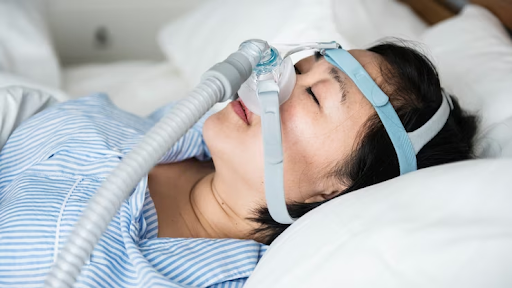FREE Shipping on Orders over $89 with Account – Create One Today!
- (844)-859-9400
- Get Help

Do you or someone you love routinely use a CPAP machine for sleep apnea treatment? If so, regular and thorough cleaning of a CPAP device is essential to ensure safe, comfortable, and effective operation.
If it’s your first time cleaning the equipment, this can be tricky — but no worries! The Monks are here to provide you with an easy-to-understand guide on how to clean the various components of a typical CPAP machine.
No matter your experience level concerning medical care or maintenance procedures, our step-by-step instructions will walk you through every part of the process so that your breathing treatments are as safe and sanitary as possible. Read on to learn more!
When it comes to CPAP cleaning, the most important thing is consistency. It is recommended that you clean your device every day or a minimum of weekly as per the manufacturers before putting on new supplies such as a mask. This will ensure that your device remains free from dirt, debris, and airborne contaminants that can affect the performance of your machine.
You should also check your equipment regularly for any signs of damage or wear and tear and replace parts when necessary. Taking proper care of your CPAP will help prolong its life span and keep it performing at its best.
To make sure you are getting the most out of your machine, ask yourself these questions:
Answering these questions will help you identify areas needing attention and ensure your CPAP device remains clean, safe, and optimized. Keeping up with regular cleaning and maintenance of your machine is key to keeping it in top shape!
Regular cleaning of your CPAP machine is integral to managing sleep apnea. Over time, it collects dust, oils from your skin, and other particles that can build up in the device or on its parts. If not removed regularly, this buildup can cause bacteria to grow and spread throughout the device. This bacteria could harm you as you breathe air with these particles during use.
To ensure that your CPAP machine continues to provide a safe and comfortable environment for treatment, it’s important to clean all device components both inside and out regularly. More frequent cleaning may be necessary depending on how much you use the machine and what type of filter it has.
Cleaning a CPAP machine may seem daunting, but the process is actually quite simple. Refer to the step-by-step guide below.
When cleaning your CPAP system, it is important to remember that a few cleaning methods are not allowed. The FDA states that ozone gas and ultraviolet (UV) cleaning systems should not be used due to the potential toxicity for patients. Additionally, using a dishwasher to clean your CPAP parts is prohibited.
It is essential to use distilled water to prevent motor damage when filling up the humidifier. Tap water can contain minerals, leading to corrosion over time and potentially causing machine malfunctions.
Finally, It is important to note that the CPAP machine should never be cleaned in a dishwasher, as doing so can damage or ruin the mask and tubing.
Replacing the components of your CPAP machine is important in ensuring proper health and safety. Here’s a breakdown of the parts and how often they should be replaced:
Caring for and maintaining your CPAP machine is vital to a successful sleeping therapy experience. Cleaning your machine and its parts regularly, checking the air filter occasionally, and replacing parts as needed will help ensure you get the most out of your CPAP machine.
Medical Monkeys proudly offers quality accessories, parts, and replacement pieces. Visit the CPAP section today if you’re looking for quality CPAP machine accessories and parts that provide value.

Edited for content by ADAM PAGE.
